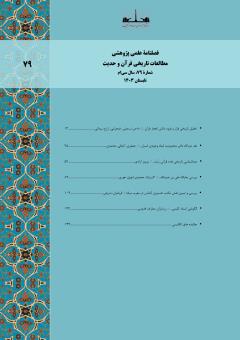معناشناسی تاریخی ماده قرآنی رَشَد؛ با رویکرد تاریخ واژهنگاری و ریشهشناسی
محورهای موضوعی : معنی شناسی تاریخی
1 - استادیار گروه علوم قرآن و حدیث، دانشگاه بین المللی امام خمینی(ره).
کلید واژه:
چکیده مقاله :
ماده قرآنی رشد از جمله واژگانی است که در تفسیر قرآن کریم محل اختلاف نظرات مفسران است. مفهوم رشد و مشتقات آن در تعلیم و تربیت اسلامی و همچنین در موضوعات روانشناسی کاربرد دارد. مفسران برای این واژه معانی هدایت، ایمان، خیر، حق، صلاح دیدن، علم، عقل، دلایل و بینات و پایداری دردین را مطرح کردهاند. از سوی دیگر در معاجم لغوی معانی مقابل غی و ضلال، هدایت، ارشاد، راهنمایی، پایداری در راه حق، و صلاح را بیان کردهاند. روشن شدن معنای دقیق این ماده هم تفاسیر دقیقتری از آیات قرآن کریم ارائه میکند و هم موجب فهم بهتر برخی موضوعات مطرح شده در سنت و فرهنگ اسلامی میشود. رشد از جمله ریشههایی است که در زبانهای نیای زبان عربی سابقه دارد و نحوه شکلگیری آن به ریشه ثنایی در زبانهای آفروآسیایی و سامی بازمیگردد. در این نوشتار ابتدا تاریخ واژهنگاری بررسی و تحلیل میشود سپس اختلافات تفسیری به صورت دستهبندی شده ارائه میشود. در ادامه با پیجویی ریشههای ثنایی در دو ریشه رَش و شَد سه روش ساخت واژه (پیشسازی، پسسازی و تلفیقی) معانی متعدد آن بررسی شد. در انتها مسیر ساخت واژه از دو طریق بیان شد که در نتیجه دو دسته معنای هدایت مستمر و تثبیت شدن به دست آمد.
The Qur'anic word of growth (rashad) is one of the words that are the source of disagreement among the commentators in the interpretation of the Holy Qur'an. The concept of growth and its derivatives are used in Islamic education as well as in psychology. For this word, commentators have proposed the meanings of guidance, faith, good, right, seeing the good, knowledge, reason, insight and persistence in religion. On the other hand, in the dictionaries, they have stated the opposite meanings of astray and aberration (ghay va ḍalᾱl), the guidance, steadfastness in the right path, and good. Clarifying the exact meaning of this article provides more accurate interpretations of the verses of the Holy Qur’an and leads to a better understanding of some issues raised in Islamic tradition and culture. Rashad is one of the roots that has a history in the ancestral languages of the Arabic language, and the way it is formed goes back to the root of thanᾱῑ in Afro-Asiatic and Semitic languages. In this article, first, the history of lexicography is examined and analyzed, then the interpretive differences are presented in a categorized form. In the following, by looking for dichotomous roots in the two roots rash and shad, three methods of word formation (pre-formation, post-formation and fusion) and its multiple meanings were investigated.

